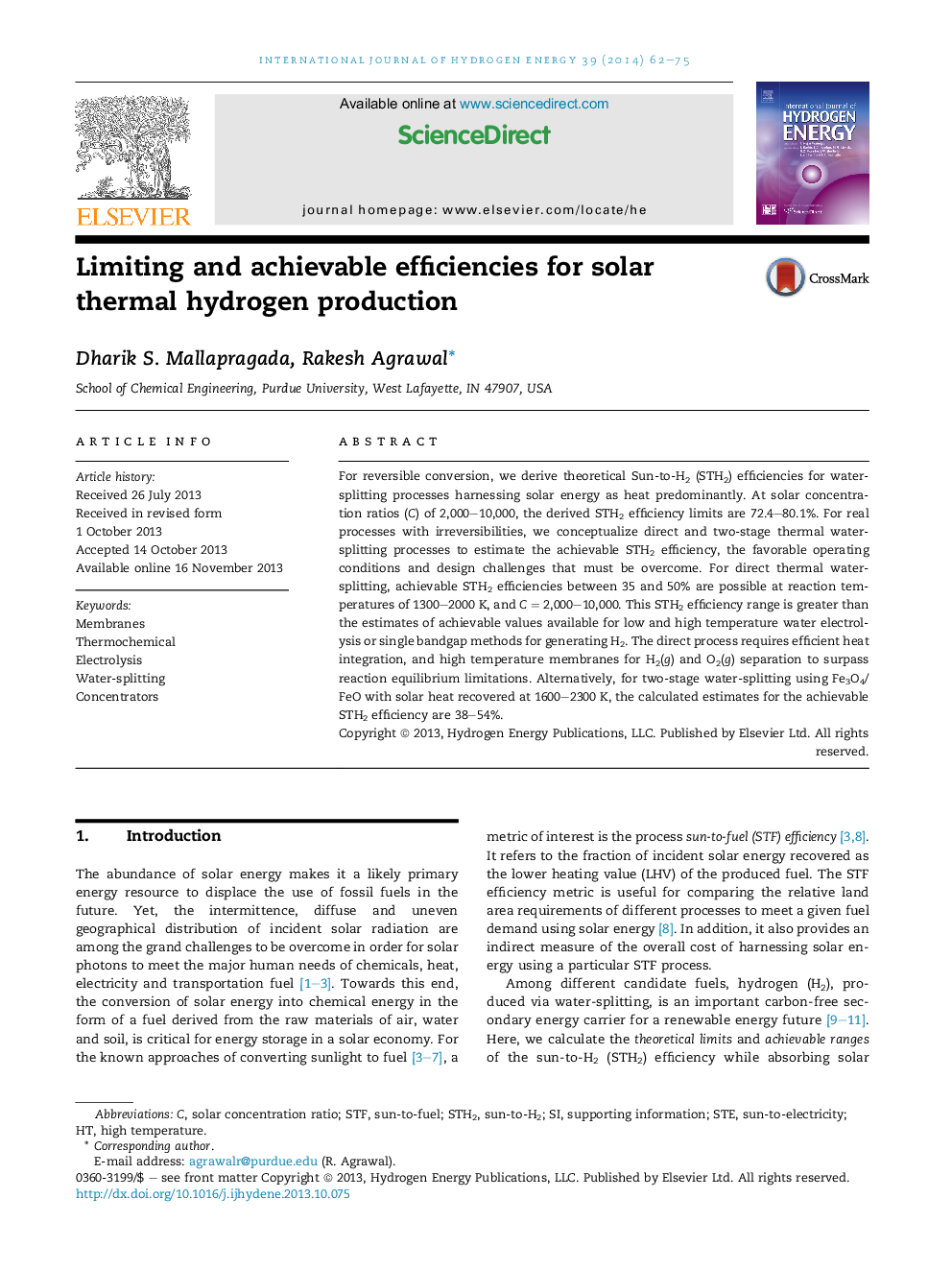| Article ID | Journal | Published Year | Pages | File Type |
|---|---|---|---|---|
| 1273919 | International Journal of Hydrogen Energy | 2014 | 14 Pages |
•We model conceptual processes for solar thermal hydrogen production.•Theoretical STH2 efficiency is 1.6–2.7 times the values for 1–2 bandgap photolysis.•Sun-to-H2 efficiency potential of 35–50% for direct thermal water-splitting.•Thermal approach, direct or two-stage, superior to electrolytic methods.
For reversible conversion, we derive theoretical Sun-to-H2 (STH2) efficiencies for water-splitting processes harnessing solar energy as heat predominantly. At solar concentration ratios (C) of 2,000–10,000, the derived STH2 efficiency limits are 72.4–80.1%. For real processes with irreversibilities, we conceptualize direct and two-stage thermal water-splitting processes to estimate the achievable STH2 efficiency, the favorable operating conditions and design challenges that must be overcome. For direct thermal water-splitting, achievable STH2 efficiencies between 35 and 50% are possible at reaction temperatures of 1300–2000 K, and C = 2,000–10,000. This STH2 efficiency range is greater than the estimates of achievable values available for low and high temperature water electrolysis or single bandgap methods for generating H2. The direct process requires efficient heat integration, and high temperature membranes for H2(g) and O2(g) separation to surpass reaction equilibrium limitations. Alternatively, for two-stage water-splitting using Fe3O4/FeO with solar heat recovered at 1600–2300 K, the calculated estimates for the achievable STH2 efficiency are 38–54%.
